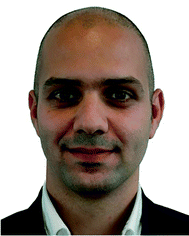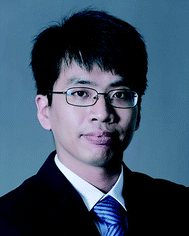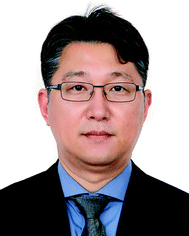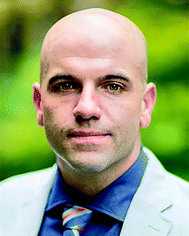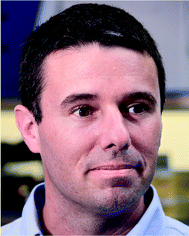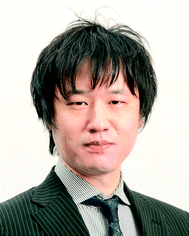Introducing the MSDE Emerging Investigators 2018
Abstract
Introducing the contributors to the first MSDE Emerging Investigators themed issue.

Hal Alper is the Paul D. & Betty Robertson Meek Centennial Professor in Chemical Engineering and Frank A. Liddell, Jr Centennial Fellow at The University of Texas at Austin. He is currently the Principal Investigator of the Laboratory for Cellular and Metabolic Engineering at The University of Texas at Austin where his lab focuses on applying and extending the approaches of related fields such as metabolic engineering, synthetic biology, systems biology and protein engineering.
C. Remzi Becer completed his PhD (2009) in the group of Prof. Ulrich S. Schubert at Eindhoven University of Technology, The Netherlands, and Friedrich-Schiller-University of Jena, Germany. He received a Marie Curie Research Fellowship (2009) and joined the group of Prof. David M. Haddleton, University of Warwick, UK. He was awarded a Science City Senior Research Fellowship (2011–2013) to start up his independent research group at the University of Warwick. He is currently a Senior Lecturer in the School of Engineering and Materials Science at Queen Mary, University of London and leading the Polymer Chemistry Laboratory. His research interests include precision polymer synthesis, glycopolymers, supramolecular systems, macromolecular machines and nanomedicines.
Nishanth Chemmangattuvalappil is an Associated Professor in the Department of Chemical and Environmental Engineering and the director of sustainable process integration research group at University of Nottingham Malaysia campus. He received his PhD in Chemical Engineering from Auburn University, AL, USA (2010). He worked as a post-doctoral fellow at University of Pittsburgh, PA, USA and later at Auburn University. His main areas of expertise include product and molecular design, mixture design and integrated biorefineries. He has co-authored more than 70 journal articles and five book chapters. In addition, his works have been presented in more than 60 international conferences.
Chaohua Cui is currently an associate professor at Soochow University. He received his BS degree in July 2009 from Beijing Institute of Technology, a MS degree in July 2011 from Beijing University of Chemical Technology (co-supervised by Prof. Yongfang Li in ICCAS), and his PhD degree in chemistry in 2014 from Hong Kong Baptist University under the supervision of Prof. Wai-Yeung Wong. His research focus is on developing novel conjugated polymer and small-molecule donor materials for organic solar cells.
Andrew Ferguson is an Assistant Professor of Materials Science and Engineering, and an Affiliated Assistant Professor of Chemical and Biomolecular Engineering, Physics and Computational Science and Engineering at the University of Illinois at Urbana-Champaign. His research group combines molecular simulation, statistical thermodynamics and machine learning to understand and engineer soft and biological materials and antiviral vaccines. He is the recipient of a 2017 UIUC College of Engineering Dean's Award for Excellence in Research, 2016 AIChE CoMSEF Young Investigator Award for Modeling & Simulation, 2015 ACS OpenEye Outstanding Junior Faculty Award, 2014 NSF CAREER Award, 2014 ACS PRF Doctoral New Investigator and was named the Institution of Chemical Engineers North America 2013 Young Chemical Engineer of the Year.
Ben Hackel is an Associate Professor of Chemical Engineering and Materials Science at the University of Minnesota. He has degrees in chemical engineering from the University of Wisconsin–Madison (BS 2003) and MIT (PhD 2009), where he worked with Dane Wittrup on engineering fibronectin domains as antibody mimics. As a post-doctoral fellow in Radiology at Stanford University with Sam Gambhir, Dr Hackel developed molecular probes for cancer detection and characterization via positron emission tomography. At the University of Minnesota, the Hackel lab develops evolutionary technologies to engineer synthetic proteins for physiological delivery and molecular imaging in oncology and infectious disease.
Carmelo Herdes joined the University of Bath as Lecturer in Chemical Engineering in November 2015. He is a member of CASE, the Centre for Advanced Separations Engineering, and teaches Engineering Thermodynamics and Design and Safety. His research is in the areas of statistical thermodynamics and molecular simulation of materials, complex fluids, adsorption and interfacial phenomena systems (e.g. polymers, activated carbons, mesoporous silicas, crystals, nanotubes, colloids, surfactants, crude oils and asphaltenes) from the atomistic to the coarse-grained level. Dr Herdes' general objective is to control and predict material properties from their atomic building blocks up to their final performance.
Ivan Konstantinov is an Associate Research Scientist at the Dow Chemical Company. He joined Dow in 2012 after a year as a post-doctoral fellow at Northwestern University. Dr Konstantinov holds a BS degree in Chemistry from University of Illinois at Chicago and a PhD degree in Chemical Engineering from Northwestern University. His research interest and work focus on applying kinetic and molecular modeling to polymer reaction engineering and reactor design. Since 2012, Dr Konstantinov has been involved in community outreach as one of the leaders of the local ACS and AIChE sections.
Daeyeon Lee is Professor of Chemical and Biomolecular Engineering at the University of Pennsylvania. Daeyeon received his BS in Chemical Engineering from Seoul National University in 2001 and received his PhD in Chemical Engineering/Program in Polymer Science and Technology at MIT in 2007. After his post-doctoral fellowship at Harvard University, Daeyeon joined the Department of Chemical and Biomolecular Engineering at the University of Pennsylvania in 2009. Daeyeon has received numerous awards and recognition, including 2010 Victor K. LaMer Award, NSF CAREER Award, 2013 AIChE NSEF Young Investigator Award, 2014 Unilever Young Investigator Award and 2017 Soft Matter Lectureship Award.
Yongye Liang received his PhD degree in 2009 from the University of Chicago under the supervision of Prof. Luping Yu. From 2009 to 2012, Dr Liang worked as a post-doctoral associate with Prof. Hongjie Dai at Stanford University. Then he joined South University of Science & Technology of China and now is an associate professor in the Department of Materials Science and Engineering. His primary research interest is molecular engineering, which combines chemical design and synthesis with device studies to develop advanced functional materials for organic electronics, electrocatalysis and bioimaging.
Peilin Liao received her BSc degree from Peking University in 2006. She obtained her PhD in Chemistry from Princeton University in 2012, supervised by Professor Emily A. Carter. She pursued post-doctoral trainings at Columbia University with Professor Richard A. Friesner and Northwestern University with Professor Randall Q. Snurr before she joined the School of Materials Engineering at Purdue University in 2016. Her research group focuses on applying first principles theory and atomistic simulations to study physics and chemistry of materials.
Vijayakumar Nair is a native of Kerala, the south west state of India. He obtained his PhD in Chemistry from the University of Kerala in 2008 based on work in the area of ‘Functional Supramolecular Materials’ under the guidance of Prof. A. Ajayaghosh. Subsequently, he worked as a post-doctoral researcher (2008–2010) at the National Institute for Materials Science, Japan and as an Assistant Professor (2011–2012) at Osaka University, Japan. In January 2013, he joined CSIR-NIIST, Thiruvananthapuram as a scientist. His current research interests include supramolecular smart systems, perovskite nanocrystals and hybrid thermoelectric materials.
Jaehong Park is from Seoul, South Korea. After earning his B.S. in Chemistry and Earth System Science from Yonsei University, he worked for Samsung Electronics. He then moved to United States where he obtained his Ph.D. in Chemistry from the University of Pennsylvania. After postdoctoral research at the Chemistry and Nanoscience Center at the National Renewable Energy Laboratory (NREL), Colorado, USA, he joined the Department of Molecular Engineering at Kyoto University in Japan in 2017, where he is a Junior Associate Professor. His current research interests focus on fundamental understanding of intermolecular interactions governing photophysics and excited-state dynamics of organic/inorganic semiconducting materials.
Jim Pfaendtner is an Associate Professor of Chemical Engineering at the University of Washington and Senior Scientist at Pacific Northwest National Laboratory. He holds a BS and a PhD in Chemical Engineering. Additional appointments include Senior Data Science Fellow at the UW eScience Institute and UW Clean Energy Institute. Jim's research interests lie at the intersection of computational molecular science and data science with applications in biotechnology, chemical reactivity, and energy storage. Jim is currently the director of an NSF graduate training program (NRT) at the intersection of data science and clean energy.
Jian Qin is an Assistant Professor in the Department of Chemical Engineering at Stanford University. He received his BS and MS degrees in materials science from Tsinghua University and his PhD from the University of Minnesota under the supervision of Profs David Morse and Frank ates. He then worked as post-doctoral researcher with Prof. Scott Milner in Penn State University and with Prof. Juan de Pablo in the University of Chicago. His research focuses on theoretical and simulation studies of morphological and rheological behaviors of multicomponent polymeric fluids, electrostatic interactions in solid polymer electrolytes and surface charge polarization.
Robert A. Riggleman received a BS in Chemical Engineering from the University of South Carolina, Columbia, and a PhD in Chemical Engineering from the University of Wisconsin, Madison. He joined the faculty in the School of Engineering and Applied Science at the University of Pennsylvania in 2010, where he is currently an Associate Professor. His research uses molecular dynamics, Monte Carlo, and field-theoretic simulations to study fundamental problems related to the dynamics and thermodynamics of soft materials. He has developed novel techniques to study composite materials as well as the properties of disordered solids and glasses.
Jeffrey Rimer is the Ernest J. and Barbara M. Henley Associate Professor of Chemical Engineering at the University of Houston. Jeff received BS degrees in Chemical Engineering and Chemistry from Washington University in St. Louis and Allegheny College, a PhD in Chemical Engineering from the University of Delaware, and he spent two years as a post-doctoral fellow at NYU's Molecular Design Institute. Jeff's research in the area of crystal engineering focuses on the rational design of materials with specific applications in the synthesis of microporous catalysts and adsorbents, and the development of therapeutics to inhibit crystal formation in pathological diseases.
Matteo Salvalaglio is a Lecturer in the Department of Chemical Engineering at University College London, where he leads the Molecular Modelling and Engineering group. Matteo obtained his PhD in Chemical Engineering and Industrial Chemistry from Politecnico di Milano in 2011. Before joining UCL in September 2015, Matteo carried out post-doctoral research at ETH Zurich, holding a joint position between the Department of Mechanical and Process Engineering and the Department of Chemistry and Applied Biosciences. Matteo's research focuses on the application of state-of-the-art molecular simulation methods to investigate how molecular-level phenomena impact technologically relevant processes in the field of chemical and biochemical engineering.
Avi Schroeder is an Assistant Professor of Chemical Engineering at the Technion–Israel Institute of Technology where he heads the Laboratory for Targeted Drug Delivery and Personalized Medicine Technologies. Dr Schroeder conducted his post-doctoral studies at MIT, and his PhD in the Hebrew and Ben-Gurion Universities. Avi is the recipient of more than 20 awards, he is a Kavli Fellow, a Horev–Leaders in Science and Technology Fellow, and an Alon Fellow; a recipient of the Intel Nanotechnology, TEVA Pharmaceuticals, and the Wolf Foundation Krill Awards, as well as a scientific entrepreneur, involved in translation of these discoveries to industry.
Charles Sing is an Assistant Professor of Chemical and Biomolecular Engineering at the University of Illinois at Urbana-Champaign. He received his BS and MS in polymer science from Case Western Reserve University in 2008, and his PhD in materials science from MIT in 2012. Prior to starting at Illinois in 2014, Charles was an IIN Postdoctoral Fellow at Northwestern University. His research interests are broadly in the area of computational and theoretical polymer physics; current projects focus on molecular and sequence properties of polyelectrolyte solutions, out-of-equilibrium rheology of semidilute polymers and DNA/protein interactions.
Anna Slater graduated from the University of Nottingham with a PhD in Supramolecular Chemistry (2011), specialising in the synthesis of perylene bisimide derivatives. After PDRA positions in porphyrin chemistry (University of Nottingham) and supramolecular materials science (University of Liverpool), Anna was appointed as a Royal Society–EPSRC Dorothy Hodgkin Fellow at the University of Liverpool Materials Innovation Factory in 2016. Her research interests span flow chemistry, materials science, supramolecular self-assembly and organic synthesis of polyaromatic molecules.
Thomas Speck studied physics at the University of Stuttgart, Germany. In 2007 he received his PhD in the group of Udo Seifert working on the stochastic thermodynamics of small, classical driven systems. From 2009 to 2011 he went to the USA as a post-doctoral researcher with David Chandler at the University of California, Berkeley. In 2011 he returned to Germany to join the group of Hartmut Löwen in Düsseldorf. Since 2013 he has been a professor at the University of Mainz. His research is on statistical physics of non-equilibrium systems and its application to the numerical modeling of driven soft materials.
Greg M. Thurber is an Assistant Professor of Chemical Engineering and Biomedical Engineering at the University of Michigan. He received his interdisciplinary PhD and post-doctoral training under Dane Wittrup at MIT and Ralph Weissleder at Harvard Medical School. His current work focuses on molecular design and engineering to develop novel therapeutics and imaging agents including self-administered near-infrared probes for disease screening, novel antibody drug conjugates and bioorthogonally stabilized alpha helices. Prof. Thurber has authored over 30 journal publications, 3 book chapters and numerous conference proceedings and is the recipient of several awards including an NIH K01 and NSF CAREER award.
Junpei Yuasa received his BS (2002) and MS (2004) degrees from Osaka University. He obtained his PhD degree at Osaka University in 2006 in the field of metal ion-promoted electron transfer. In 2008 he accepted a position as Assistant Professor at Nara Institute of Science and Technology. In 2016 he moved to Tokyo University of Science as Junior Associate Professor. His research interests involve chiral lanthanide assembly, photo-functional lanthanide complexes, circularly polarized luminescence and coordination-driven self-assembly using zinc ions.
| This journal is © The Royal Society of Chemistry 2018 |

